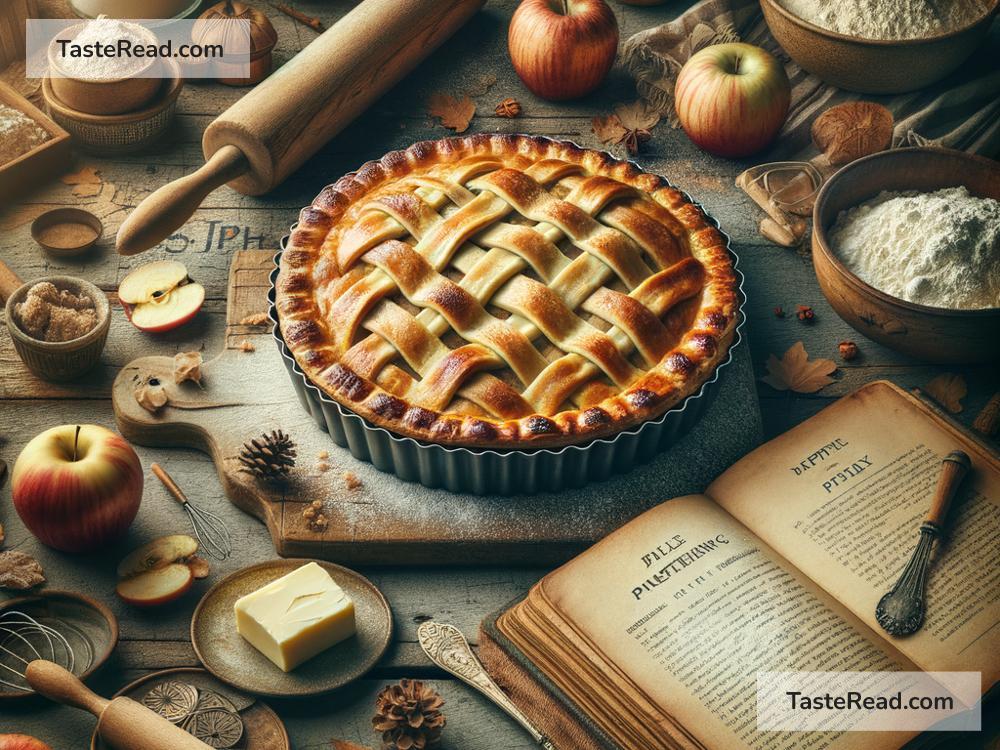The History of the American Pie
The smell of a freshly baked pie is something that anyone can recognize. Apple pie, cherry pie, pumpkin pie—whatever the flavor—it’s one of the most popular desserts in America. But have you ever wondered where it came from? The history of the American pie is long and full of interesting twists and turns. Let’s explore how this delicious dessert became such a big part of American culture!
Pie Through the Ages
Believe it or not, pies did not start in America. They’ve been around for thousands of years! The earliest versions of pies were made by the ancient Egyptians, Greeks, and Romans. In those days, the “pie crust” wasn’t meant to be eaten. Instead, it was used to hold the filling together and keep it fresh. These early pies were usually filled with meat rather than fruit or sweet ingredients.
In medieval Europe, pies became much more common. Bakers started experimenting with crusts, fillings, and shapes of pies. By the 1500s, fruit pies were becoming popular in England. Queen Elizabeth I is believed to have enjoyed one of the first cherry pies ever made!
When European settlers came to America in the 17th century, they brought their pie recipes with them. However, ingredients were limited in the New World, so they had to adapt their recipes to use what was available. Over time, American pies took on their own unique style and character.
How Pie Became “American”
Early American pies were very practical. Settlers didn’t have fancy ovens like we do today, so they used simple baking techniques to make pies. The crust was often thick and tough to protect the filling inside. It wasn’t just used for dessert, either—pies were a convenient way to serve savory dishes like meats and vegetables.
As America grew, so did the variety of pies. Native Americans showed settlers how to use local ingredients like pumpkins and berries. Apple pie eventually became one of the most popular kinds. Apples were easy to grow in many regions, and preserving fruit in pie form helped settlers make use of their harvests all year long.
By the 19th and 20th centuries, pie was more than just a food—it was becoming part of American culture. It showed up at celebrations and holidays, especially Thanksgiving. Pumpkin pie became a Thanksgiving classic, symbolizing autumn harvests and the family gathering tradition.
“As American as Apple Pie”
You’ve probably heard the saying, “as American as apple pie.” But what makes pie so representative of American identity? It’s not just the taste—there’s a deeper meaning behind those words.
Pie symbolizes hard work, resourcefulness, and community. Early settlers had to be creative with the ingredients available to them, using local produce and making do with limited supplies. Sharing a pie often brought people together, whether it was at a church gathering, a family dinner, or a potluck.
During World War II, the phrase “as American as apple pie” became popular. Soldiers overseas were said to miss the comforts of home, including apple pie. Over time, the saying became linked to patriotism and the idea of the American dream. Pie is simple, approachable, and nostalgic, which is why it holds such a special place in people’s hearts.
Regional Pies
America is a big country, and different regions have their own types of pies. Wherever you go, you’re likely to find pies made with the ingredients grown locally.
- Southern Pies: In the South, pies like pecan pie and sweet potato pie are famous. These pies are sweet, rich, and often served at holiday meals. Chess pie, made with sugar, butter, eggs, and a splash of vinegar, is another Southern favorite.
- New England Pies: In the northeastern states, pies like cranberry pie and blueberry pie are popular. New England’s colder weather means lots of berries and tart fruits are used in dessert recipes.
- Midwestern Pies: The Midwest is known for cream pies, including banana cream pie and chocolate cream pie. These pies are filled with smooth, velvety custards.
- Western Pies: Out west, you’ll find pies made with fruits like peaches, apricots, or huckleberries. Many western states are known for growing delicious fruit, so their pies reflect those flavors.
No matter where you are, you can find a pie that feels unique to that region.
The Modern American Pie
Today, pie is still one of America’s favorite desserts. You’ll find it at holidays, birthday parties, and family dinners. But modern pies can look very different from those of the past. Bakers are now experimenting with new flavors and creative designs. Pies can be savory or sweet, traditional or modern.
One thing hasn’t changed, though: pie still brings people together. Whether you’re sharing one fresh out of the oven or picking up a slice at your favorite diner, it’s a dessert that feels comforting and nostalgic.
Conclusion
The American pie is much more than a dessert—it’s a symbol of history, community, and hard work. From its ancient beginnings to its place in modern culture, pie has always had a special role in people’s lives.
So the next time you take a bite of apple pie or pumpkin pie, think about the journey it’s been on to get to your plate. A humble slice of pie carries with it centuries of tradition and the spirit of America itself. Isn’t that something worth celebrating?


